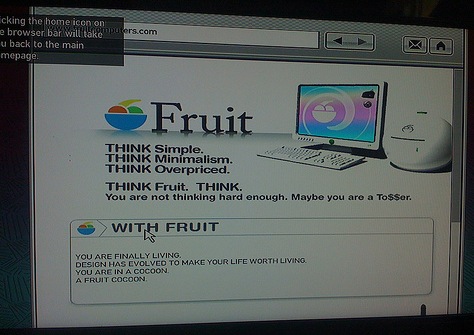NEW YORK - They stand in line outside stores waiting for midnight launches of new video games. When they get home after a long day, they plop down in front of the TV not to sit back and watch, but to play.
They're known as "core gamers." They are people like Greg Wilcox, who writes about video games and has bought roughly 100 this year, and people like Mark Hengst, who's in law enforcement and says daily gaming gives him an "interactive form of escapism." And there's Wyatt Du Frane, a geology graduate student who's been playing since he was a little boy.
"I like their scope," said Du Frane, 28, a student at Arizona State University. "A movie is only a couple of hours. A video game is more like a book or a TV series, where you can kind of continue the story."
For the video game industry, core gamers are proving crucial. Their willingness to regularly, loyally buy new titles — no matter what — gives the industry a better chance of success than other businesses that rely on discretionary spending vulnerable to the recession.
"As long as hard-core gamers have a job, they will continue to buy games," said IDC video games analyst Billy Pidgeon.
The industry's ability to lean on core gamers is a bit of a twist, because video game makers have been working hard to grow by expanding their mainstream appeal.
Families and people who haven't picked up a game controller in ages, or ever, have flocked to the easy-to-master Nintendo Wii since its 2006 launch. Taking note, Sony Corp. and Microsoft Corp. have been expanding what their game consoles offer, adding movies and TV shows, to attract people whose idea of the perfect Sunday afternoon doesn't involve shooting aliens. Software publishers like Ubisoft Entertainment, Activision Blizzard Inc. and Electronic Arts Inc. have boosted their titles aimed at young girls, families and women over 35, who have helped push game sales higher.
Yet some analysts believe it will turn out to be core gamers — who might be more reliable consumers of their favorite form of entertainment than movie buffs or sports fans, for example — who keep the industry afloat as the rest of us cut back.
Michael Pachter, an analyst with Wedbush Morgan, estimates that core gamers buy roughly half of all video games.
"They may be wealthy, they may be poor, but they have no clue we are in a recession," Pachter said.
Wilcox — who does know we are in a recession — said he's trimmed how much he spends on video games because of it. Still, he said, "people will always be buying games." After all, added the 44-year-old New York City resident, people need entertainment.
New blockbuster titles, like the post-apocalyptic "Fallout 3," the choose-your-own-adventure epic "Fable II" and alien shooter "Gears of War 2," go for $60 each. So if they don't have a lot of cash, core gamers have to get creative by renting, trading or selling used games. Du Frane uses this strategy to often avoid paying full price for games. But at least he's still buying them: In the economic downturn, instead of pulling back on games, he's cut back on going to bars and restaurants.
"For the same price I can get a game to occupy me," he said.
Similarly, while the game industry appears to be weathering the recession better than many businesses, it certainly has felt the effects. GameStop Corp., the world's largest video game retailer, has cut its earnings targets for its fiscal fourth quarter, which ends in January.
Core gamers, however, were not to blame. Chief Executive Daniel Dematteo said the company reduced its outlook to reflect an uncertainty inherent in the business this time of year. For most of the year, GameStop's main customers are reliable video game fans. Around the holidays, the company's customer base briefly shifts, as gamers' friends and families start poking around GameStop shelves looking for gifts. This is when things get more unpredictable, especially in the current economy.
In fact, in a recent conference call with analysts, Dematteo pointed to the success of new games such as "Call of Duty: World at War," "Gears of War 2" and "World of Warcraft: Wrath of the Lich King." All three are targeted at game enthusiasts.
"World of Warcraft," the world's most popular online game, brings in about half of the operating profit for its publisher, Activision Blizzard, according to analysts.
"If the core gamers and the avid gamers are with us through these very unpredictable times, that's a very, very good sign for us," said R. Richard Fontaine, GameStop's chairman, during the call.
So far, so good. Americans are spending more money than ever on video games — nearly $3 billion in November, according to the NPD Group. That was a 10 percent increase from the same month last year.
In 2007, people bought $18 billion worth of games, consoles and accessories. Even with discretionary budgets shrinking, the NPD Group expects this number to grow to at least $22 billion this year.
In contrast, U.S. consumer spending on home video is going down. Spending declined 2.4 percent for the first three quarters of the year, to $14.2 billion, according to industry tracker Video Business. The decline reflects lower purchases as well as a dip in rentals. Meanwhile, major pro sports leagues have begun cutting jobs and expenses, fearing that ticket sales will drop next year.
Hengst, 31, who lives in Los Angeles, recently bought the new "Prince of Persia" and the latest "Call of Duty" video games and estimates he spends a couple of thousand dollars a year on games.
"For me it's much like why I enjoy reading so much," Hengst said. "It's a form of escapism."






